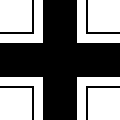| Bergetiger | |
|---|---|
 Toy model of a Bergetiger | |
| Type | Heavy tank/Military engineering vehicle |
| Place of origin | Nazi Germany |
| Service history | |
| In service | 1943–1945 |
| Used by | Nazi Germany |
| Wars | World War II |
| Production history | |
| Manufacturer | Henschel |
| Specifications (RfRuK VK 4501H Ausf.E, Blatt: G-330) | |
| Mass | 54 tonnes (60 short tons) |
| Length | 6.316 m (20 ft 8.7 in) 8.45 m (27 ft 9 in) gun forward |
| Width | 3.56 m (11 ft 8 in) |
| Height | 3.0 m (9 ft 10 in) |
| Crew | 5 |
| Armor | 25–120 mm (0.98–4.72 in) [1] [2] |
Secondary armament | 7.92 mm MG 34 4,500 rounds |
| Engine | Maybach HL230 P45 V-12 700 PS (690 hp, 515 kW) |
| Power/weight | 13 PS/tonne |
| Suspension | Torsion bar |
| Ground clearance | 0.47 m (1 ft 7 in) |
| Fuel capacity | 540 L (140 US gal) including reserve |
Operational range | 110–195 km (68–121 mi) |
| Maximum speed | 45.4 km/h (28.2 mph) |
The Bergetiger was the name the Allied forces gave to a German World War II armored tracked vehicle based on the Tiger. The vehicle was found abandoned on a roadside in Italy with terminal engine problems. The main gun had been removed, and a boom & winch assembly had been fitted to the turret. No other Tiger tanks modified in this manner were ever recovered.
